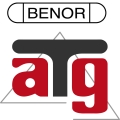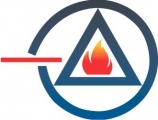
Fire at the "Sanglier des Ardennes" - Durbuy
A recent fire caused significant damage to the "Sanglier des Ardennes," a well-known restaurant in Durbuy. The fire is believed to have originated in the kitchen, starting from a charcoal grill and spreading to the kitchen's exhaust ducts.
Beyond the typical heat sources found in professional kitchens, these exhaust ducts pose a significant risk to surrounding buildings. Due to their function, the walls of these ducts are constantly coated in greasy deposits from cooking processes. An excessive increase in temperature within these ducts (caused by a kitchen fire, for example) can ignite these deposits and their vapors, rapidly transforming them into a full-blown blaze. This is fueled by the heat from the underlying fire and the airflow inherent in the system, causing the fire to spread rapidly and violently within the duct.
The graph below, based on a test conducted by ANPI on an exhaust duct fire as described in the EN 17446 standard, illustrates the temperature increase and the onset of fire within the duct.

The rapid temperature increase in the duct demonstrates that it becomes a source of heat and/or flame along its entire length, and thus a potential ignition source for any nearby structures. The installation of the duct and its supports within the surrounding infrastructure is crucial. Given the high temperatures reached, any element in direct contact with the duct could become a potential ignition source. Adherence to the manufacturer's installation guidelines is therefore essential to prevent incidents.
Certification of industrial kitchens
ANPI offers manufacturers of industrial kitchen fire suppression systems tests to obtain certification according to the European standard EN 17446:2021(A1:2024), which sets performance requirements for these systems. Tests conducted by ANPI on such exhaust ducts show that the temperature can exceed 500°C within seconds when a fire starts. As soon as this growth is observed experimentally and according to the criteria imposed by the standard, the duct's fire suppression system is activated. A rapid decrease in temperature is then observed, indicating that the fire in the duct is extinguished and that the suppression system has functioned.
One might wonder what would happen if the suppression system were not activated manually following the monitoring of the temperature rise in the duct. There is every reason to believe that the temperature would continue to rise, likely causing the duct to degrade and flames to appear on its exterior, or even its rupture, as has been observed during such tests.
It is clear that these temperature phenomena and behaviors in exhaust ducts pose a significant danger, as they can potentially spread a fire, initially present in a kitchen, to an entire building.
To ensure protection that goes beyond the requirements of the European standard EN 17446:2021(A1:2024), ANPI offers a Technical Notice, NTN 185-L, which evaluates the performance of the automatic activation system of the suppression system. The European standard requires the presence of such an activation device but does not provide any requirements regarding its performance.
ANPI aims to enhance fire safety in industrial kitchens and therefore proposes, through NTN 185-L, tests and certifications to evaluate the performance of the automatic activation system. These tests require infrastructure similar to those required by the European standard and can therefore be carried out simultaneously.
By obtaining EN 17446 and NTN 185-L certification through tests conducted by ANPI, manufacturers of fire suppression systems for industrial kitchens ensure that they offer products capable of controlling fires not only effectively but also quickly!
Certification of installers
Additionally, ANPI offers certification to installers to meet the requirements of the European standard EN 16282-7 2024, which sets out the requirements for how industrial kitchens must be installed at customer sites.
Benefits for users
The certified suppression systems thus guarantee their users optimal protection against incidents and full compliance with current standards. For information, the declaration of conformity that the installer must issue is at the end of the article. Do not hesitate to call on the inspection services of ANPI to validate your current kitchens.
It is to prevent incidents such as the one that occurred at the "Sanglier des Ardennes" that ANPI offers the services described above. Users of ANPI-certified suppression systems can therefore offer their customers their culinary expertise with peace of mind without having to fear the worst.
The fire at the "Sanglier des Ardennes" highlights the urgent need to bring industrial kitchens up to standard. Although, and we wish to emphasize this, the exact cause of this disaster is still unknown, all testimonies mention the kitchen or its exhaust ducts. ANPI, a major player in fire prevention, once again wishes to remind everyone that there are standards in this area. Fires originating in kitchens are legion. This is evidenced by the great interest shown by standardization bodies and the constant updating of standards in this area.






